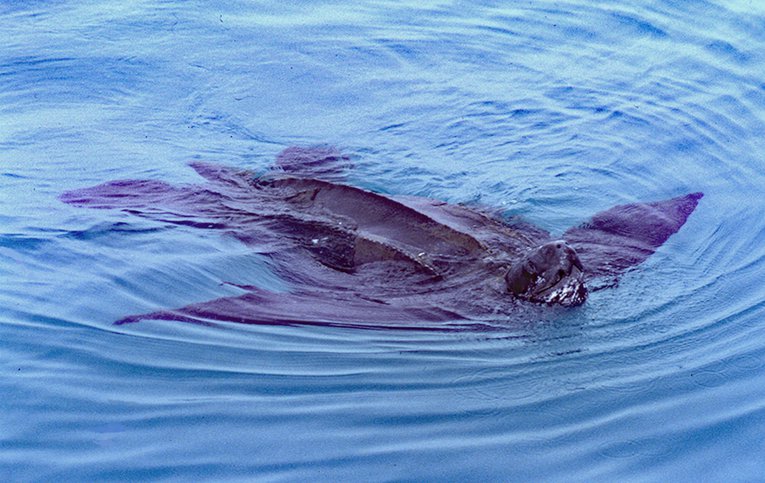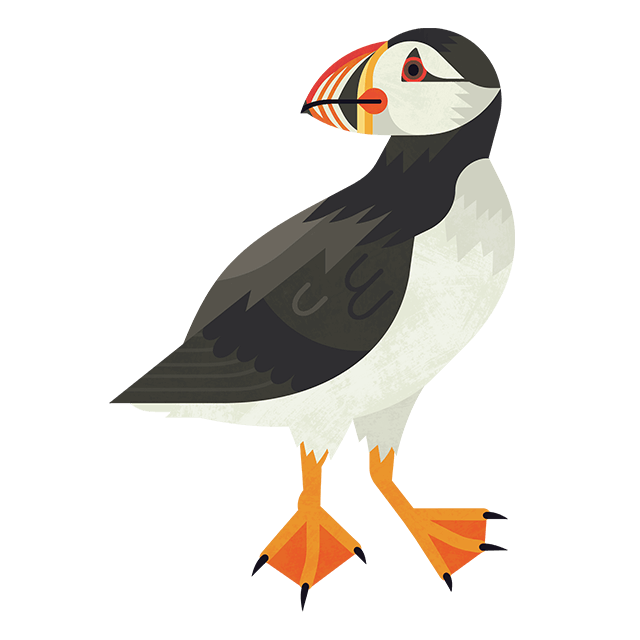
Look out for leatherback sea turtles this summer
With wildlife sightings season on the horizon, we shine a spotlight on the most frequently recorded sea turtle species in UK and Irish waters – the leatherback.
The leatherback stands out among sea turtles with its remarkable ability to adapt and survive in our cooler waters, a trait that sets it apart from other reptiles. It's a species of unparalleled uniqueness, and we're incredibly lucky to have it as a regular visitor to our shores.
They are a stand-out sea turtle
Leatherbacks are by far the largest of the seven species of sea turtle, with adults growing to more than 2 metres in length. Black with white spots, the leatherbacks appearance makes them easy to distinguish from other turtle species that have hard shells and scales.
Unlike other sea turtles that possess a tough and inflexible keratin shell (the same protein our fingernails are made of), the leatherback is soft-shelled and named after its leathery, rubber-like skin marked with ridges. Their distinctive teardrop shape and the absence of claws on their flippers sets them apart from other turtle species.
They migrate further than any other reptile
The leatherbacks streamlined shape and soft shell gives them more flexibility in movement - and the ability to swim further and deeper than any other sea turtle. They are well suited to open ocean swimming, undertaking journeys of up to 10,000 miles each year. Their ability to swim long distances means that leatherbacks are a highly migratory species and hold the title for the most widely distributed sea turtle species. Nesting populations reside in subtropical and tropical regions such as Indonesia and the Caribbean, undertaking migratory journeys to foraging grounds in colder regions as far south as South Africa and as far north as Alaska.

Credit: ACEgan via Shutterstock
They are efficient feeders
A leatherback’s diet primarily consists of jellyfish, but they’re also known to eat squid, fish and even seaweed. Their preference for low energy, low protein food sources despite their colossal size is surprising – with adults needing to consume approximately 75% of their body weight each day to meet their energy demands.
As a result, leatherbacks have to be efficient consumers of jellyfish. They have toothless jaws and protrusions lining their throat known as papillae. These papillae protect them from jellyfish stings when swallowing, and guide slippery, soft-bodied creatures down the turtle's throat, as well as gripping onto the prey to prevent regurgitation when expelling seawater.
Leatherbacks meet their energy requirements for their long journeys by choosing feeding opportunities that offer the biggest meal. They target blooms of jellyfish rather than individuals, so they can consume a vast amount of food in one go. As the waters around the UK and Ireland warm up, jellyfish numbers have become plentiful - so be on the lookout for leatherbacks migrating to our waters to feed this summer!
They are the only warm-blooded marine turtle
Another unique characteristic of leatherbacks that allows them to forage in our waters is that they’re warm-blooded. This means that unlike other marine turtles, they can regulate their own body temperature. To do this, they have a network of tightly packed blood vessels in their flippers which allows warm blood to pass by cold blood. This helps them to keep their body temperature several degrees above the ocean around them and tolerate colder waters.
They are prehistoric
These majestic creatures have been around since the age of dinosaurs and are the only surviving species in its family - Dermochelyidae. Leatherback turtles have remained relatively unchanged since the Jurassic period, surviving several mass extinctions of other animals - including the asteroid impact that wiped out dinosaurs 65 million years ago.
Having been around for so long, leatherbacks are fundamental to the health of marine ecosystems. They keep jellyfish populations in check whilst their migratory journeys help to distribute nutrients around the globe.

Credit: Colin Speedie
They are now vulnerable
Sadly, it seems that this species which has roamed our earth for the last 100 million years is now facing extinction due to human activity. Loss of nesting habitat, bycatch in fishing nets and ingestion of plastic bags, which they often mistake for jellyfish (and cannot be expelled due to the turtles’ papillae) - are all reasons why sub-populations of these magnificent creatures are now critically endangered.
Do your bit to help conserve leatherback turtle populations by reporting any jellyfish or turtle sightings. This vital data allows us to assess their distribution and protect them through more informed policies and conservation strategies.
By joining as a member, you can play a vital role in safeguarding the future of our precious marine life.




